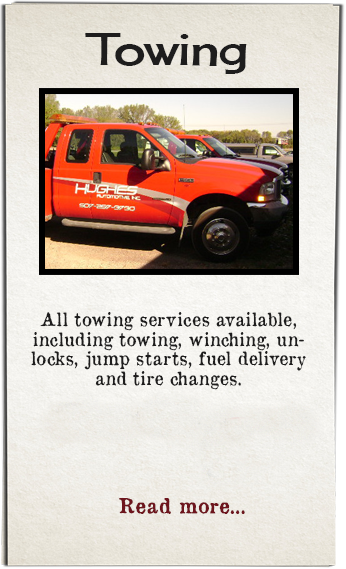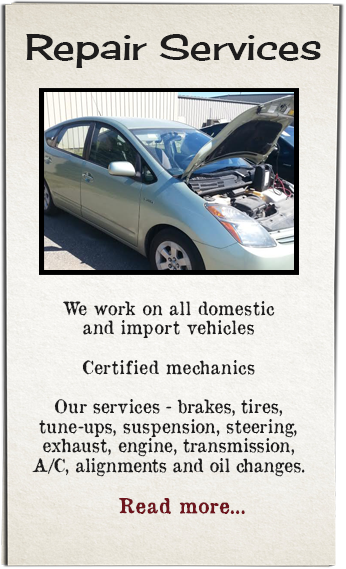Most Eagle Lake and Mankato drivers want to save on gas and seek our advice on improving gas mileage. At Hughes Automotive Inc, we are frequently asked, however, if it is really worth the extra effort. Just how much money can Eagle Lake car owners actually save?
The US government has a website dedicated to helping us use less fuel. It presents the cost savings in a way Eagle Lake auto owners can relate to and is relevant for all vehicles. Let me give you an example: Having your sedan engine properly tuned, can save up to 4%. If you’re paying three-fifty for a gallon of gas in Eagle Lake, you could save fourteen cents a gallon.
In today’s Hughes Automotive Inc article, we’re focusing on the things you can do to improve your sedan fuel economy driving around MN. We’ll tell you the potential savings per gallon of gas at three dollars and fifty cents, and we’ll show a chart that also shows the savings at three and four dollars.
| DOLLARS PER GALLON | $3.00 | $3.50 | $4.00 |
| TUNE UP 4% | .12 | .14 | .16 |
The next item is replacing a clogged engine air filter. Your engine needs enough air to burn fuel efficiently for the best fuel efficiency. A clean air filter means you get plenty of air. The fact that the air’s clean protects your engine. That can save you up to ten percent or thirty-five cents a gallon.
| DOLLARS PER GALLON | $3.OO | $3.50 | $4.00 |
| AIR FILTER 10% | .30 | .35 | .40 |
Fixing a faulty oxygen sensor can improve economy by up to forty percent. That’s a whopping dollar forty in savings per gallon. Bring your car to Hughes Automotive Inc in Eagle Lake and we’ll check your oxygen sensor.
| DOLLARS PER GALLON | $3.00 | $3.50 | $4.00 |
| FAULTY O2 SENSOR 40% | 1.20 | 1.40 | 1.60 |
Chances are that if your oxygen sensor is kaput your check engine light will come on. Now, there’s any number of things that could cause your check engine light to come on besides oxygen sensor problems. But if it’s on, get it checked out as soon as you can at Hughes Automotive Inc.
Here’s an easy one for astute Eagle Lake car owners. Inflate your tires to the recommended pressure. That could save you three percent or eleven cents a gallon. Even a little drop in pressure will bring down your fuel efficiency, so check your tires every week.
| DOLLARS PER GALLON | $3.00 | $3.50 | $4.00 |
| TIRE INFLATION 3% | .09 | .11 | .12 |
Your sedan car maker has recommended a specific weight of motor oil. The recommendation is based on engine design and will give you the best protection. Using a heavier weight could cost one to two percent in reduced fuel economy, or up to seven cents a gallon.
| DOLLARS PER GALLON | $3.00 | $3.50 | $4.00 |
| RIGHT GRADE MOTOR OIL 2% | .06 | .07 | .08 |
Here’s one that’s free for Eagle Lake motorists that want to save cash: Take it easy when you drive. Aggressive driving (we’ve all seen this on Eagle Lake roads), rocketing away from stop lights, standing on the brakes, punching it for lane changes – really takes a toll on your fuel economy.
Cutting out aggressive driving around Eagle Lake can save five percent or eighteen cents a gallon. Now on the freeway it gets really costly: thirty three percent or a buck sixteen a gallon. Think about that – and leave a little earlier.
| DOLLARS PER GALLON | $3.00 | $3.50 | $4.00 |
| DRIVE AGRESSIVELY – MIN. 5% | .15 | .18 | .20 |
| DRIVE AGGRESSIVELY – MAX. 33$ | .99 | 1.16 | 1.32 |
A related item is exceeding the speed limit. For example, if the speed limit is sixty miles per hour on your Eagle Lake interstate, an additional five miles will cost seven percent or twenty-five cents a gallon. Fifteen miles per hour will cost you upwards of eighty cents a gallon.
| DOLLARS PER GALLON | $3.00 | $3.50 | $4.00 |
| SPEED LIMIT – MIN. 7% | .21 | .25 | .28 |
| SPEED LIMIT – MAX. 23% | .69 | .81 | .92 |
The last thing we’ll talk about is excess weight. Our sedans tend to accumulate a lot of things and the weight adds up. Clear out the trunk and only haul stuff when you really need it. For every one hundred pounds you can save two percent or seven cents a gallon.
Sorry honey, your brother can’t come with. It’d cost an extra thirty cents a gallon.






